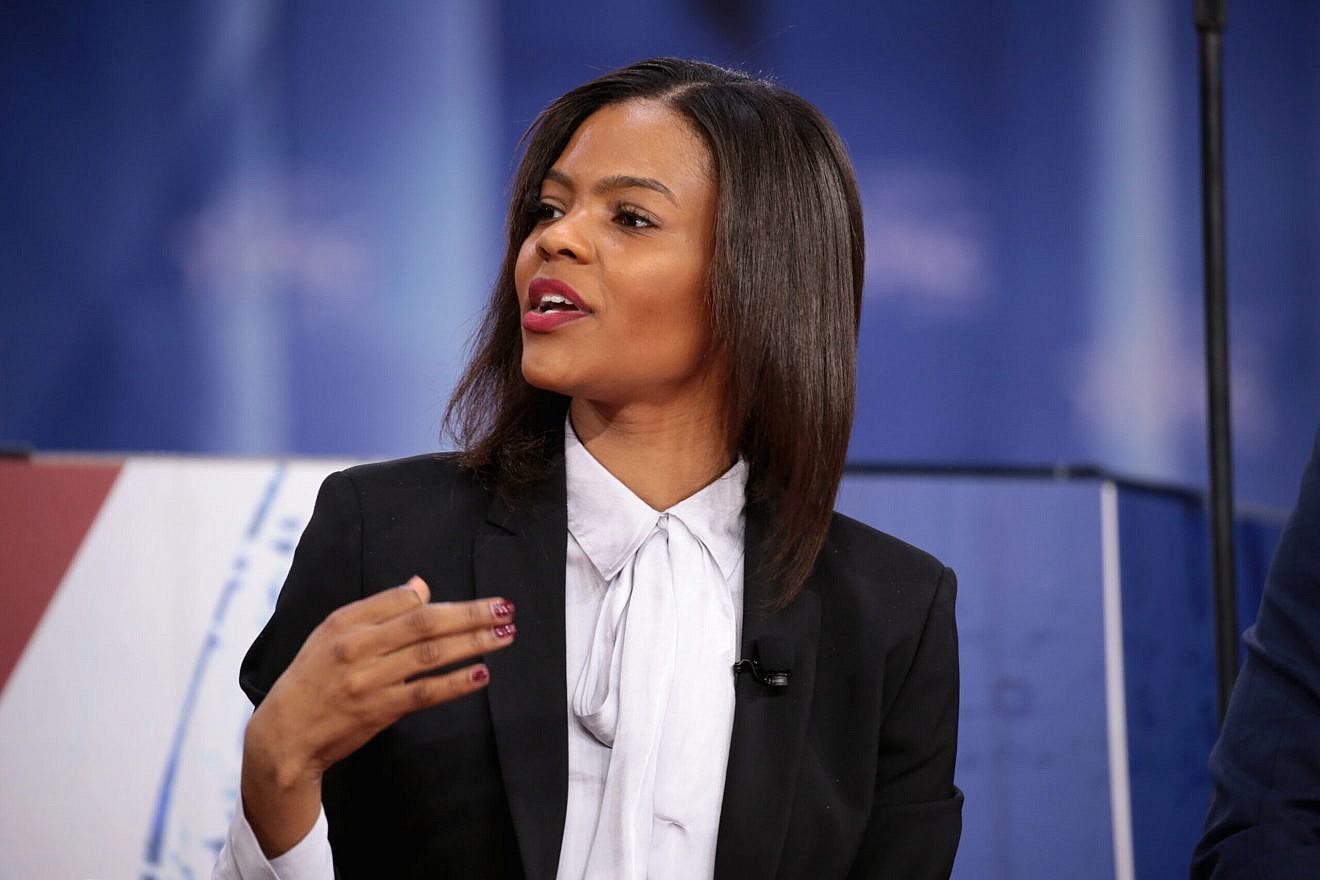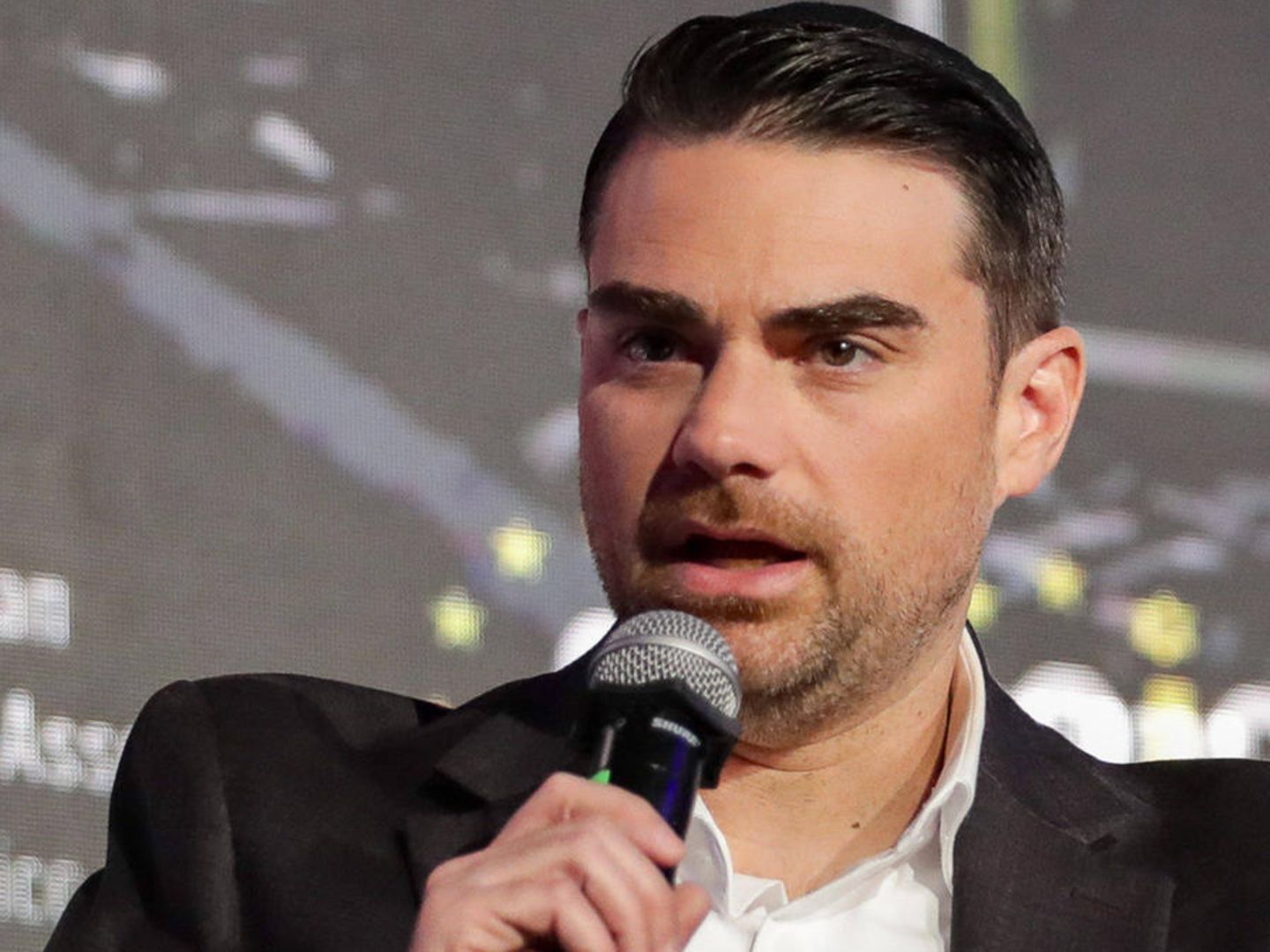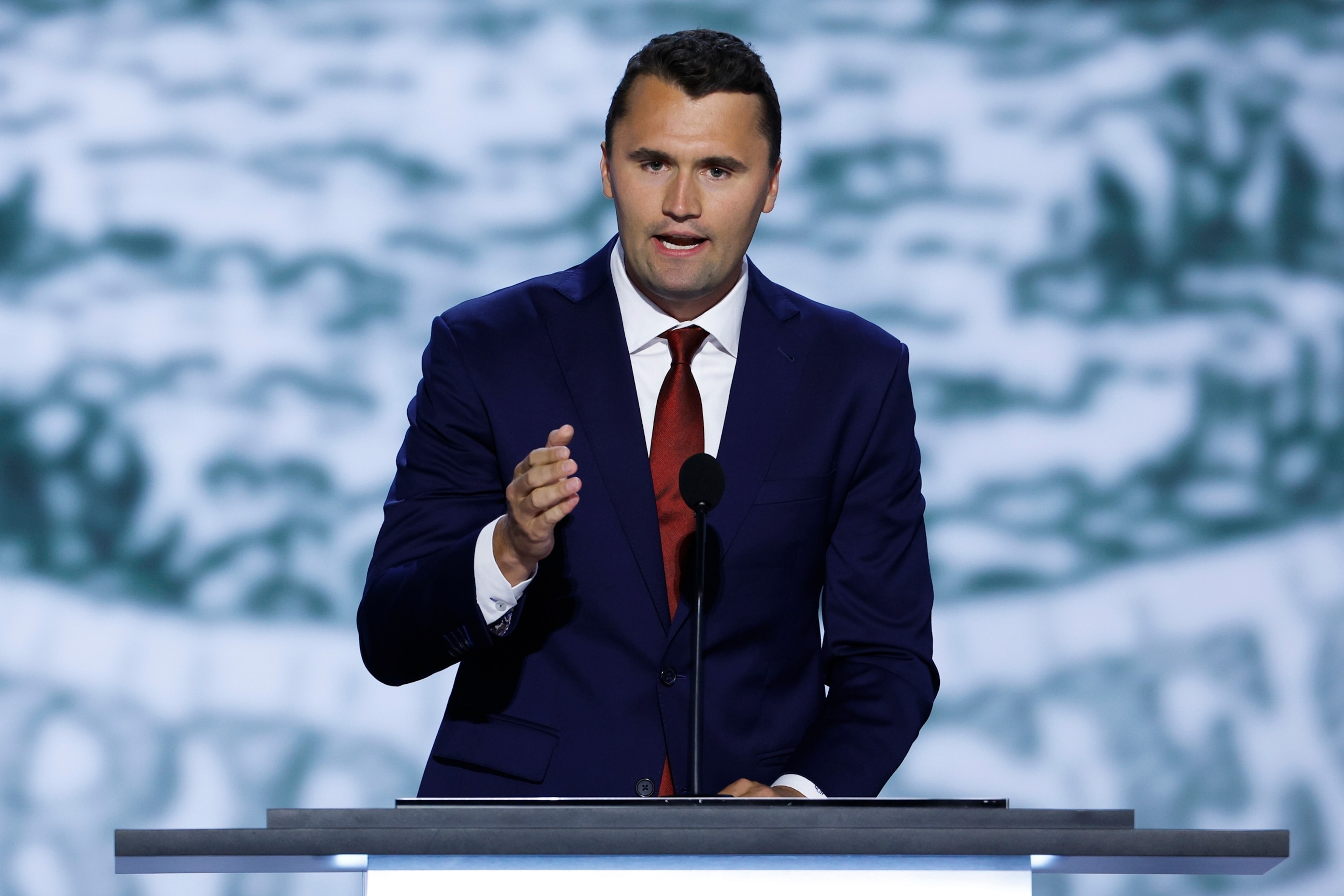Candace Owens Clashes with Ben Shapiro — She Claims Powerful Billionaires Are Ripping the Conservative Movement Apart.ABC
The clash between Candace Owens and Ben Shapiro has become one of the most talked-about conflicts in modern conservative circles. What started as personal disagreements quickly escalated into a full-blown war of words, capturing the attention of conservatives, political commentators, and media audiences alike.
Owens, a high-profile activist and commentator, has long been known for her provocative statements, while Shapiro, founder of The Daily Wire, has established himself as a sharp, disciplined conservative voice. When their paths collided publicly, the conservative movement witnessed a rare internal conflict, exposing cracks that have been growing for years.
Shapiro called Owens “a disappointment,” criticizing her methods and tone, while Owens responded sharply, labeling him “emotionally unbalanced” and “influenced by money.”
But the drama didn’t stop at personal attacks. Owens connected the public feud to broader issues affecting the conservative movement, hinting at the influence of powerful billionaires allegedly manipulating events behind the scenes.
She even referenced the unfortunate death of Charlie Kirk, a well-known conservative figure, as part of the larger picture, raising eyebrows and intensifying speculation.

This confrontation marks the largest internal conflict within the conservative movement in a generation. Beyond the drama between two prominent figures, it raises deeper questions about loyalty, influence, and the hidden forces that may be shaping the ideological landscape.
In this article, we will explore the history of their feud, the allegations about billionaires influencing conservative events, the internal divisions, and the consequences for both the movement and its followers. By the end, readers will be left asking: who is really pulling the strings, and can the conservative movement survive this storm?
The feud between Candace Owens and Ben Shapiro did not arise overnight. Both have been central figures in the conservative movement for years, but their approaches have often clashed.
Owens has built her reputation on bold, attention-grabbing statements that resonate with younger audiences, particularly on social media platforms. She combines a direct, unapologetic style with cultural commentary, often criticizing perceived hypocrisies in liberal and progressive circles. Shapiro, by contrast, is known for his meticulously structured arguments, focus on logic and data, and disciplined style of debate.
The contrast in personalities and strategies naturally set the stage for conflict. Early disagreements were often dismissed as minor differences in approach, but as both figures gained larger followings, their disagreements began to be more public and more intense.
Social media amplified the tensions, with each side using platforms like Twitter, X, and YouTube to respond to the other, often sparking heated discussions among their audiences.
Owens has accused Shapiro of being disconnected from the grassroots conservative base, claiming that his approach prioritizes prestige, money, and media influence over genuine ideological advocacy.
She frequently characterizes him as overly rigid and unwilling to engage in the kind of cultural battles that she considers essential to the movement’s success. Shapiro, on the other hand, has critiqued Owens for her confrontational style and her willingness to push narratives that, in his view, may harm the broader conservative cause. He has described her approach as reckless, accusing her of elevating drama over substantive policy discussion.
The personal dimension of this conflict intensified during public appearances and interviews. Owens’ confrontations with Shapiro have often included pointed remarks about his motivations, while Shapiro’s responses have emphasized accountability, discipline, and the responsibility that comes with public influence.
The clash reflects more than just personality differences—it underscores a philosophical debate within the conservative movement about tone, strategy, and the boundaries of acceptable discourse.
The history of their conflict is also intertwined with their respective networks. Both figures command substantial followings, and their feud has created ripple effects throughout the conservative media ecosystem.
Loyal supporters have often taken sides, with debates spilling into comment sections, podcasts, and live streams. The result is a highly visible rift, with implications for how conservative ideas are communicated and how internal disagreements are handled.
While the personal feud between Owens and Shapiro is dramatic in its own right, Owens has introduced a broader and more provocative element: allegations that powerful billionaires may be influencing events within the conservative movement.
These claims have caused significant controversy, not least because they suggest that the internal divisions may be fueled by external interests rather than organic disagreements.
Owens’ statements often hint at a network of wealthy individuals who, she alleges, have the resources and incentives to manipulate conservative organizations, media platforms, and key figures.
She links these alleged influences to strategic outcomes that could destabilize conservative unity, framing them as a hidden force shaping the movement’s trajectory.
In particular, Owens has mentioned the unfortunate death of Charlie Kirk as an example of broader patterns, though she stops short of making any direct accusation of wrongdoing.
The introduction of billionaires into the narrative dramatically escalates the stakes. Readers and audiences are compelled to consider not only the personal clash between Owens and Shapiro but also the broader implications of external influence.
Is the conservative movement being shaped by unseen financial pressures? Are ideological battles being orchestrated behind the scenes for strategic or monetary gain?
Owens’ claims have sparked intense debate across social media, podcasts, and conservative forums. Supporters argue that she is exposing uncomfortable truths about power and influence, while critics warn that such claims risk undermining credibility and spreading unverified speculation.
The conversation highlights a persistent tension within the movement: the balance between legitimate critique, speculation, and the preservation of internal cohesion.
While these allegations remain unverified, they serve as a lens through which the conflict can be understood. Owens’ narrative reframes the feud as part of a larger struggle, elevating the conflict beyond personality disputes to a reflection of systemic pressures and hidden agendas.
The drama, combined with the suggestion of outside interference, has captivated audiences and drawn attention to previously overlooked dynamics within conservative circles.

The feud between Owens and Shapiro is emblematic of a broader internal conflict often referred to as the conservative civil war. This struggle reflects the tension between different factions within the movement: traditionalists who prioritize policy and structure, and more culturally focused activists who prioritize influence, narrative, and social engagement. Owens represents the latter approach, while Shapiro represents the former.
The consequences of this civil war are visible across media platforms. Loyal supporters of each figure often clash in comment sections, podcast discussions, and live debates, creating a fragmented and polarized environment. The rift is not just theoretical; it affects fundraising, media reach, and organizational cohesion, influencing how conservative agendas are pursued in practice.
Historically, the conservative movement has experienced internal disputes, but few have reached the intensity or visibility of the Owens-Shapiro conflict. Comparisons have been drawn to previous ideological clashes in the 1990s and early 2000s, yet the addition of social media amplification and billionaire influence allegations adds new dimensions. The result is a multi-layered conflict that touches on personal rivalry, ideological debate, and questions of external manipulation.
Owens’ framing of the conflict as part of a broader battle against unseen forces has resonated with a portion of the conservative audience. It reinforces a narrative of vigilance, where supporters are encouraged to question authority, scrutinize internal dynamics, and recognize the potential for influence from outside interests.
Meanwhile, Shapiro’s supporters emphasize caution, arguing that excessive focus on speculation can weaken the movement and distract from actionable policy goals.
This internal struggle is further complicated by generational divides. Younger conservatives, often more attuned to social media trends and rapid-response activism, tend to gravitate toward Owens’ style. Older conservatives, who favor disciplined argumentation and strategic planning, often align with Shapiro.
The result is not merely a clash of personalities but a structural division within the movement itself, with long-term implications for leadership, messaging, and public perception.

The public reaction to the Owens-Shapiro conflict has been intense. Social media platforms have become battlegrounds where supporters and critics alike debate every statement, clip, and tweet.
This level of attention has consequences. Media coverage often amplifies the drama, which in turn drives engagement, clicks, and subscriptions. While this can be beneficial for the profiles of the individuals involved, it also highlights the risk of internal conflict overshadowing policy discussion.
Critics worry that persistent focus on personal feuds could erode trust in conservative institutions and weaken collective efforts to advance political objectives.
Supporters of Owens argue that her willingness to challenge prominent figures and speak out about alleged external influences represents courage and transparency.
They view the conflict as an opportunity to reassess leadership priorities and ensure that the movement remains accountable to its base. Supporters of Shapiro, on the other hand, caution against distraction, emphasizing the need for discipline, strategy, and focus on concrete policy achievements rather than internal disputes.
The conflict also exposes the role of media ecosystems in shaping narratives. Clips, headlines, and social media commentary magnify certain aspects of the feud while downplaying others.
The result is a feedback loop: drama attracts attention, attention drives engagement, and engagement perpetuates further drama. In this sense, the Owens-Shapiro feud exemplifies broader challenges in modern political communication, where the line between substantive debate and entertainment often blurs.
The conflict between Candace Owens and Ben Shapiro is more than a personal feud. It is a reflection of a deeper conservative civil war, one influenced by ideology, strategy, generational differences, and possibly external forces.
The introduction of billionaire influence allegations adds a layer of intrigue, forcing supporters to consider the possibility of hidden pressures shaping events within the movement.
For observers, the conflict raises several pressing questions. Who is truly steering the conservative movement? How much influence do personalities versus external actors hold? Can the movement maintain cohesion in the face of public disagreements and internal tension? These questions remain open, inviting speculation, discussion, and ongoing analysis.
One thing is clear: the Owens-Shapiro feud has captivated attention because it touches on fundamental dynamics within the conservative movement. It highlights the tension between discipline and boldness, strategy and narrative, internal cohesion and external influence.
For followers, supporters, and critics alike, the unfolding events are a dramatic reminder that politics is never just about ideas—it is also about personalities, power, and perception.
As the conservative civil war continues to unfold, the stakes remain high. The resolution of this conflict—or lack thereof—could have lasting consequences for leadership, messaging, and the ability of the movement to present a unified front.
Whether Owens and Shapiro will find common ground, continue to clash publicly, or influence the broader ideological landscape from their respective positions remains to be seen.
What is certain is that the conservative movement of today is navigating a turbulent and transformative moment, one in which every statement, allegation, and decision carries outsized significance.

The drama, intrigue, and speculation surrounding this feud ensure that it will remain a central topic of discussion for months to come. Followers are left to watch, debate, and question: who is really in control, and what forces are shaping the future of the conservative movement?
The drama between Candace Owens and Ben Shapiro goes beyond simple disagreements; it has become a narrative in itself, drawing in followers, commentators, and political enthusiasts.
Every public statement, tweet, and interview becomes fodder for discussion, analysis, and sometimes outright speculation. Owens’ style is inherently confrontational—she uses vivid language and direct challenges that resonate with a younger, more digitally savvy audience. Shapiro, on the other hand, maintains a disciplined, almost surgical approach, emphasizing logic, statistics, and structured arguments.
This clash of styles has amplified tensions. Social media users often debate not just the content of what is said but the style in which it is delivered. Owens’ supporters see Shapiro as rigid, disconnected, and overly concerned with image, while Shapiro’s followers view Owens as reckless, dramatic, and occasionally careless with facts.
The interplay between these narratives creates a multi-layered conflict that cannot be understood purely as a clash of personalities—it is also a contest of communication strategies, audience engagement, and ideological framing.
The “performative” aspect of this feud has not gone unnoticed. Both figures understand that attention is a form of power. Viral clips, trending hashtags, and shareable soundbites magnify the feud’s reach, turning what could have been a private disagreement into a public spectacle.
In many ways, the battle for influence on social media mirrors the larger battle for the future direction of the conservative movement. Every viral clip has a ripple effect, reinforcing existing loyalties while also challenging undecided followers to take a stance.
BREAKING: Lucy Martinez Fired After Mocking Charlie Kirk's Murder — The Video That Lost Her Job Has Suddenly Goes Viral! Viet

BREAKING: Lucy Martinez Fired After Mocking Charlie Kirk's Murder — The Video That Lost Her Job Has Suddenly Goes Viral!
A storm of outrage swept across the nation this week after a resurfaced video showed Chicago high school teacher Lucy Martinez laughing and making flippant remarks about the murder of conservative commentator Charlie Kirk — remarks that prompted her immediate dismissal and have now reignited a heated national debate about accountability, cancel culture, and the power of social media.
The clip, roughly 18 seconds long and grainy in quality, was first uploaded to a private account months ago. On October 19, 2025, an unknown user reposted the footage to a public platform, and within hours it had been shared millions of times. In it, Lucy Martinez — long respected by some students for her unfiltered classroom banter — is seen offhandedly laughing and making a sarcastic comment about Kirk’s killing while surrounded by what appears to be colleagues in a teachers’ lounge. The casual tone and the timing of the repost were enough to blow open a controversy that local administrators say they had no choice but to address.

“We were stunned,” said one distraught parent who asked not to be named. “You don’t expect your child’s teacher to be seen mocking a murder. People are angry, and they have every right to be.”
Within twelve hours of the clip going viral, Northfield Academy — a public high school on Chicago’s north side where Lucy Martinez had taught social studies for seven years — issued a terse statement: “Following an internal review, Lucy Martinez has been terminated effective immediately for conduct unbecoming of a member of our faculty.” The school district later added that the firing was the result of behavior inconsistent with professional standards and that the district takes all such matters seriously.
But the public reaction was far from uniform. Online, the video has split the country in two: some demand swift and total ostracism for Lucy Martinez others insist she’s been unfairly destroyed by a single moment taken out of context. As the debate rages, more questions have surfaced — chief among them: why was an old, private clip released now, and who stood to gain from bringing it back into the spotlight?
The Video — What It Shows (And What It Doesn’t)
Eyewitness accounts and social media breakdowns have reconstructed the key parts of the clip. Lucy Martinez is seated, coffee in hand, speaking to a small group. Her exact words are fuzzy in the grainy video, but the tone is unmistakably mocking. Online sleuths have paused and replayed the footage ad nauseam, isolating frames and amplifying audio to create subtitles and dramatic reaction GIFs.

Supporters of the school district say the footage is clear enough: the teacher is making light of a high-profile murder that shocked a nation. Opponents argue the clip lacks critical context — that what looks condemnable in 18 seconds may have been part of an offhand conversation or an attempt at gallows humor that, while distasteful, doesn’t prove someone deserves to have their career ended.
“Gallows humor exists because people try to process tragedy,” said an online commentator with a large following. “If we are to fire people for every poor joke made in private, where does it end?”
Timing Feeds Suspicion
What has intensified the controversy is timing. The repost occurred the day after a widely publicized court hearing in the Charlie Kirk murder investigation that revealed new names and renewed national focus on the case. Pundits and conspiracy-minded internet users were quick to connect dots: the video’s sudden reappearance — exactly when public attention returned to Kirk — felt suspicious to many.
“It’s either a bizarre coincidence or someone is strategically stirring the pot,” said a former PR operative who asked not to be named. “In today’s media ecosystem, timing is everything. The person who posted this knew exactly the temperature of the moment.”
There are already rumors that the clip’s resurgence was engineered to distract from developments in the Kirk case or to divert public anger toward a convenient target. Others suggest the post could be a revenge move by a former colleague or an ex-student with a grudge. So far, no definitive source for the repost has been identified.
School, Union, And Community React
The school district moved fast. Within hours, the principal held a closed-door meeting with staff and released a short statement confirming Lucy Martinez immediate termination. A district spokesperson told reporters that the decision was based on a “thorough review of the incident and its impact on students and families.”
The teachers’ union, meanwhile, has issued a guarded response. On October 20, union representatives said they were concerned by the speed of the dismissal and called for a transparent review of the school’s disciplinary process.

“We condemn mocking violence,” the union’s brief said, “but we also must ensure that due process is observed. Our members deserve a fair assessment, and the context must be considered before careers are destroyed.”
By day two, the local community had split into vocal camps. A group of parents gathered outside Northfield Academy, waving signs demanding accountability. Nearby, a smaller counter-protest arranged a “due process” rally, arguing that social media mobs should not be the arbiter of employment.
Morales Speaks — Or Doesn’t
As outrage swelled, Lucy Martinez maintained silence. Her friends say she has been overwhelmed, with calls and messages flooding in. A brief handwritten note posted to a private social media account read: “I regret the pain caused. I never intended to mock anyone’s suffering.” But the statement stopped short of a full apology or a detailed explanation — a gap that has fueled speculation and anger in equal measure.
A neighbor who asked not to be identified told reporters Lucy Martinez had been “a devoted teacher,” noting that students frequently praised her engaging lessons and dry wit. Some former students have started an online petition to reinstate her, claiming that the clip misrepresents her character.
Media And Political Fallout
National outlets quickly picked up the story, framing it within larger cultural debates. Conservative commentators argued the incident underscores a pervasive problem among public servants who allegedly display hostility toward conservative figures. Progressive voices, meanwhile, emphasized accountability and the pain caused to victims’ families when public figures are mocked.
Local politicians weighed in. An alderman issued a statement supporting the school’s decision to fire Lucy Martinez, calling the clip “unacceptable.” Another council member cautioned the public to allow for investigation, noting that firing in the age of social media can be irreversible.
Anatomy of a Viral Roast: How One Clip Toppled a Career
Media analysts say the mechanics behind Morales’ downfall are painfully familiar: a private moment captured on video; a single, well-timed repost; algorithmic amplification; moral outrage; and then institutional action. What used to take weeks to culminate now takes mere hours.
“It’s the perfect storm,” explained a digital culture analyst. “Combine a volatile subject, a charged political climate, and social media’s hunger for outrage, and you have a scenario that gets people fired before the dust settles.”
Those who study cancel culture caution that swift punitive action can sometimes be disproportionate to the offense, erasing nuance and leaving no room for rehabilitation. Critics of Lucy Martinez’ firing argue the school should have chosen a less terminal response — mandatory counseling, sensitivity training, or administrative leave pending a full investigation.
The Bigger Question: Who Benefits?
Perhaps the most persistent question is not whether Lucy Martinez should have been fired — but who benefits from her downfall. In a media cycle hungry for narratives, the clip’s repost happened at a particularly combustible moment: simmering tensions over the Daniel Kirk case, renewed courtroom drama, and a polarized electorate.
“In a world where attention equals power, getting the story to trend is a political weapon,” said an independent journalist. “Whether the aim was to take down a teacher, distract from another story, or simply rile up a base, someone intentionally chose to amplify this.”
Online conspiracy threads point fingers in many directions: political operatives seeking distraction, rival media outlets hunting clicks, or even inside sources with grudges. None of these claims have been substantiated.
What Comes Next?
For Lucy Martinez, the road ahead is uncertain. Without a formal, public investigation into the provenance of the video and the motives for its repost, the truth may remain murky. Meanwhile, the school has hired a crisis team to manage backlash and reassure parents, and the union has signaled it may push for an appeal or arbitration on Lucy Martinez’ behalf.
For the public, the episode highlights a fraught new reality: private speech, once shielded by casual settings, can now be weaponized and used to mete out social and professional punishment. The balance between accountability and mercy — between condemning real harm and preserving human complexity — remains a hot-button cultural fault line.
“We live in a culture where the camera never sleeps and the court of public opinion rules without a jury,” a media ethicist said. “This case forces us to reckon with how we judge and punish, and whether we have the patience to listen to context — or the mercy to let people learn from mistakes.”
Final Twist: The Clip Might Not Be What It Seems
In the last 48 hours, conflicting reports emerged suggesting the clip could have been edited or that the audio track was misrepresented after being processed by a viral meme account. Independent analysts are now calling for forensic checks on the footage — a standard practice in high-stakes viral controversies.
If true, this twist would add another layer of injustice: an unwitting teacher losing her job because of manipulated media. If false, it will deepen the conviction of those who believe the firing was justified.
Either way, the controversy surrounding Lucy Martinez is far from over. The story is now a potent reminder that in 2025, a single short clip can end careers, inflame politics, and leave a community struggling to find the line between accountability and cruelty.






